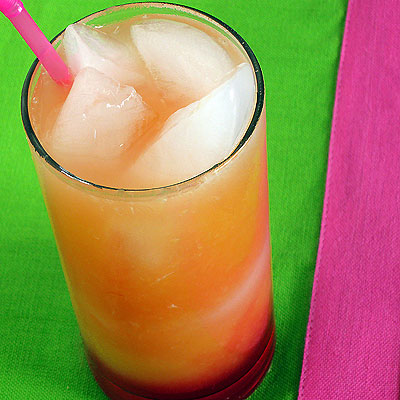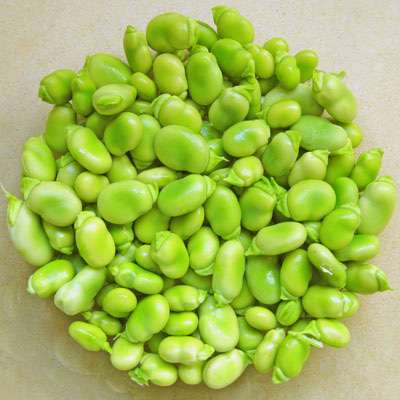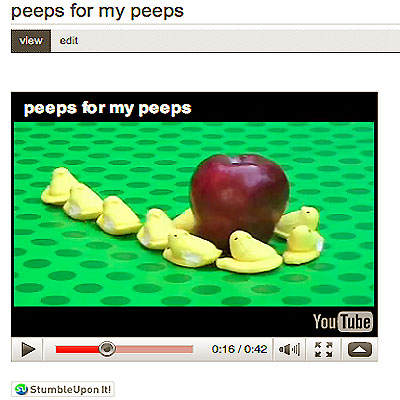
It’s been a while since I have done a cocktail. I am here to remedy that. Today’s remedy comes in the form of a Tequila Sunrise. It’s a classic cocktail, second only to the margarita in popularity when it comes to enjoying tequila. It is thought to have been introduced in Acapulco in the 1950s as a “welcome to paradise” cocktail for guests checking-in to the swanky resorts of that era.
However, I have also heard it told that the drink was “invented” when a bartender walked in on his boss quaffing tequila behind the bar in the wee-small-hours of the morning. The supposed retort from the shame-faced imbiber was that he was trying to create a cocktail that reminded him of the sunrise and needed to be “in the moment” to get proper inspiration.
Whatever its origins, to me this is a lazy day sort of cocktail. It should be taken in slowly, out of a tall glass. It’s one of the few cocktails I say absolutely needs to be sipped through a straw. It helps blend the orange juice, tequila and grenadine.
 In truth I surprised myself by choosing this cocktail. I am not a huge fan of tequila. I had a bad experience with it once and it has taken me decades to even consider drinking it again. But I spend a lot of time in Palm Springs and tequila fits the slow vibe needed to navigate the heat of a lazy weekend in the desert. We have just such a weekend coming up soon. So, to be a good sport, I am making an effort to regain my footing when it comes to this most Mexican of spirits.
In truth I surprised myself by choosing this cocktail. I am not a huge fan of tequila. I had a bad experience with it once and it has taken me decades to even consider drinking it again. But I spend a lot of time in Palm Springs and tequila fits the slow vibe needed to navigate the heat of a lazy weekend in the desert. We have just such a weekend coming up soon. So, to be a good sport, I am making an effort to regain my footing when it comes to this most Mexican of spirits.
Tequila Sunrise seems like an easy reintroduction to a beverage that has a lot of fans. Many people speak in reverence for the subtle nuances of tequila the way my brother Sip! waxes poetic about excellent wine. So, there must be something to this libation, and I am determined to get reacquainted with it.
True tequila lovers will tell you that there is a difference between tequila and mezcal. Both are made from the heart of an agave plant, but they differ in taste and method of production.
Tequila is distilled from the pinas (hearts) of the blue agave and mezcal is made from a wild type of agave that flourishes in the heat of the Oaxacan region of Mexico. Similar, but oh so different.
Both spirits have common roots, which are believed to lie in the ancient Aztec civilization with an un-distilled agave drink called pulque. It’s a sour, milky drink that is still enjoyed today. It does not have the alcoholic punch of tequila or mezcal, it’s about the same strength as wine.
The blue agave version of this drink was originally called Agave Brandy. It is now more commonly called Tequila, which is a town in the Mexican state of Jalisco, where it was first produced. In fact, like so many other alcoholic beverages, in order to properly be called tequila it still needs to be from this region.
 The name tequila stuck sometime in the 1940s when the U.S. began to import the stuff from Mexico. The place of origin was stamped on the crates, so it made sense to brand it with the same name. It quickly became popular because Irish whiskey, Scotch and French Cognac were difficult for most Americans to get during the war. This was also the time that the Margarita made its first appearance. The popularity of that drink really insured tequila’s permanent place in the bars across America. Tequila remains more popular in the US than any other country in the world (excepting Mexico).
The name tequila stuck sometime in the 1940s when the U.S. began to import the stuff from Mexico. The place of origin was stamped on the crates, so it made sense to brand it with the same name. It quickly became popular because Irish whiskey, Scotch and French Cognac were difficult for most Americans to get during the war. This was also the time that the Margarita made its first appearance. The popularity of that drink really insured tequila’s permanent place in the bars across America. Tequila remains more popular in the US than any other country in the world (excepting Mexico).
Which explains why there are now more than 350 brands of the stuff lining our shelves today; these brands can differ greatly in color, aroma and taste. Some are aged and some are for drinking young. Typically the younger versions are more light and fiery, while the aged styles are more complicated and viscous.
The clear varieties are called blanco or silver. The golden hued types are known as joven. The older tequilas are aged in wood barrels and get quite dark. Mezcal is usually clear, though sometimes tinged with gold.
The aromas and taste can vary greatly as well. Young tequila is all citrus and spice. Aged styles are headier, smoother and rich tasting, with sweet notes of caramel and honey. The nose of mezcal has a smokier whiff, with hints of chocolate on the palate.
Mezcal is typically smoother in flavor than tequila and is often served later in the day or after a meal as a digestif.
Tequila usually makes its appearance earlier in the day and there are 3 main ways to serve it: downed as a shooter (yikes, not for me), served with a sweet mixer like coke or fruit juice and a lot of ice, and of course as a cocktail such as a Margarita.
The distinction between “served with juice” and “as a cocktail” is quite a fine line in the definition department. But the best I can figure is that, despite the orange juice, adding grenadine to the mix in a Tequila Sunrise makes it fall into the cocktail category. But don’t quote me on that!
Tequila works well with food and is often paired with robust, spicy tastes. Big salty flavors work well also. Guacamole and chili peppers served with tortilla chips are quite typically eaten alongside a glass of tequila.
But my Tequila Sunrise is going to be sipped slow and long, poolside on the first really hot day of this upcoming Palm Springs season of sun and heat.
I guess you could call this a pre-season training session. Salud!
Tequila Sunrise serves 1 CLICK here for a printable version
- 2 oz tequila
- fresh squeezed orange juice to fill glass
- 1 t grenadine
- garnishes of your choice (orange slice, cherry, star fruit)
Place 3 or 4 ice cubes in a tall glass. Pour in the tequila followed by the orange juice. Stir to combine. Slowly pour the grenadine on top and let it sit a few moments with out stirring. The syrup will sink to the bottom creating that name sake sunrise effect. Finish with any or all of the suggested garnishes
SERIOUS FUN FOOD
Greg Henry
Sippity Sup


last week and forgot to tell you how much I loved it! Made a half batch and had extras — tasted even better the second day and the accouterments MADE this dish! Thanks Greg! ~Mary
I am so glad you tried it! GREG
i am making this!
I think you’ll like it! GREG
Oh Greg, I am sorry that I am laughing, but be assured I am laughing with you and not at you! I am so sorry about the jaw and now the braces, but just think of the movie star smile you’ll have when it’s all done! Well, I know you already have that but just looking on the bright side! And soup? I don’t make it enough but as I love roasted fennel (just did that last night — Yum!) I’ll bet this soup is amazing! It sure looks incredibly delicious! And soup on a rainy day is just the thing!
do you mean the face lift and pec implants? “Cuz I am not really getting those… cabn I still be a movie star? GREG
Love the creativity with fennel. I love it but do not use it nearly enough for my liking. I have no excuse, but now, thanks to you, I have inspiration! Woohoo.
Happy to be of service. GREG
really , funny food !!
good work »> go ahead
Greg,
I am a fennel lover: whether raw in salads, roasted, roasted and pureed into a sauce, or in this case, a fantastic soup.
So, you had me with fennel…then to add Stilton and toasted walnuts~what an elegant soup!
Good luck with the braces. Star anise is one of my favorite additions to desserts, fennel is absolutely delicious roasted and carmelized.
You weren’t joking about the rain, the natural rock formations in the landscape have turned into fast moving waterfalls.
not roasted. I made a pot of fennel soup yesterday. I love it btw I HATE licorice, especially living in the Netherlands where you can find salty licorice sweets!!!!!!!
This is an amazing looking pot of soup. Makes we want to make some soup right now!
This soup has so many of my favorite flavors in it, I CAN’T wait to try it myself. I am VERY grateful that you felt like soup yesterday! Thanks.
I am trying to up my game here lately and present more sophisticated combinations. GREG
1) Did you find the source of the comforter?
2) I do not appreciate any anise flavor but if you come on out to RI, I promise to let you cook it for me and I will try it.
…probably came out of the armoire and Ken probably got up in the middle of the night to get it. Unless I sleep walk. I must ask Ken… GREG
Well, looks like the rain didn’t rain on your parade. Fennel rules any way it’s done, and I like fruits and nuts topping my soup. Braces, really? My mother in law had them in her 50’s.
… in 2 hours and 15 minutes (and counting). I have to take my anti-saliva pill soon so I can have dry mouth for the procedure! GREG
… who has yet to develop a proper appreciation for anise flavor. However, I do love soups, especially velvety soups — I’m open to being converted.
I wore braces for 2 years just a few years ago and it was worth every minute. The purpose was to straighten my teeth but the attendant jaw alignment was a miracle! I’ll raise a glass to you and the full return to health of that handsome jaw!
if you survived braces as an adult then I feel hopeful I can too. GREG
usually bring me down. Thank you for putting smile on my face… and for the great fennel tip, not everyone in my household shares my fennel appreciation.
…more rain coming! GREG
That is definitely not your ordinary soup — such a creative and unique combination of ingredients here! Especially intrigued with the addition of stilton!
You are one of my inspirations! GREG
See above. Looks very unassuming, but I can tell by the ingredients.…
This soup is a great combination of flavors. GREG
That’s a beautiful soup with some unexpected ingredients like the stilton, cider vinegar and cranberries. I must profess to being a fennel junkie. I love it raw — and it’s a lot more forgiving snack than other choices in the refrigerator. Sorry to hear the jaw ordeal continues…but at least your sense of humor prevails.
…acts as a seasoning. You should not “taste” it, but the tiniest hit of acidity brightens the flavors in this considerably. GREG
that’s what you are.….……luring me here with this gorgeous soup. Always a unique bit of fun here at Sup! ~ Mary
…but my teeth are soon joining it! GREG
Oh yeah. I love The Fennel. I am also a huge fan of Pernod, Richard, anise, star anisette, fennel seed and 5‑spice. Who could not love this fragrant family? Perhaps the black sheep — the licorice jelly bean- has not helped the family’s rep.
I hope those finicky friends will still hang out with you once you get your braces. And if they invite you over for a meal heavy on the spinach or parsley… beware!
Your soup sounds wonderful- I love the idea of roasting fennel bulbs! I will love the way my house smells doing this. Pressing print now.…
What’s a man to do? Thanks for the spinach tip. I have actually had braces as a teenager, so I should be able to miss most of the road hazards. It’s so unfair! Braces twice in one lifetime… GREG
looks delicious going to try it
You can’t resist the power of soup especially on days like these. I wlcome the rain with open arms!! Now I need to get my paws on some fennel.
Looks Delicious going to try it